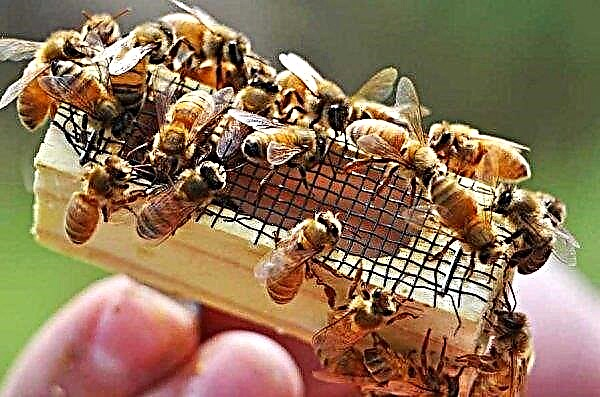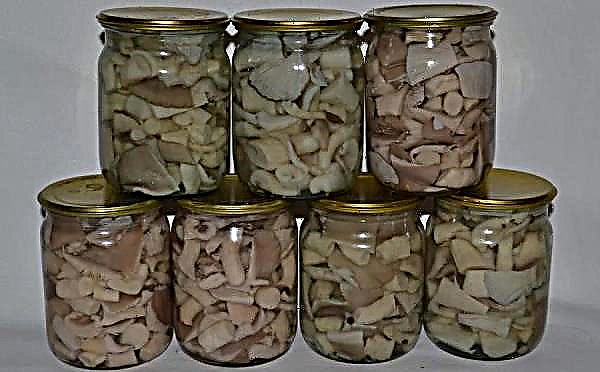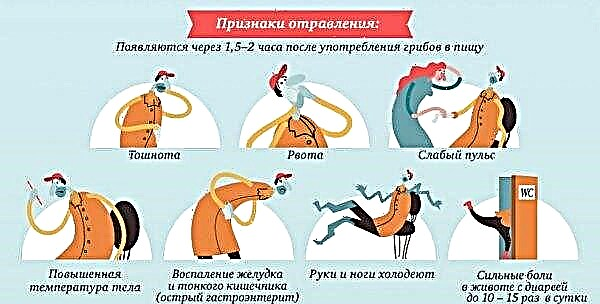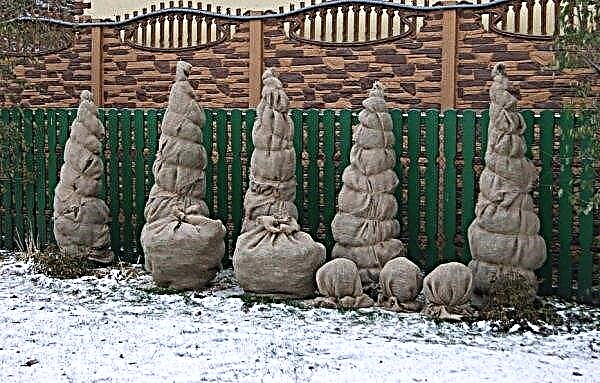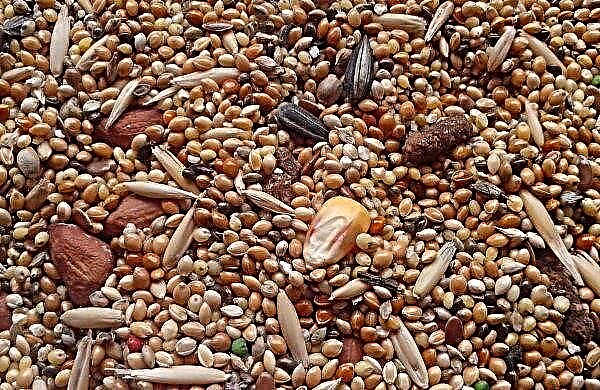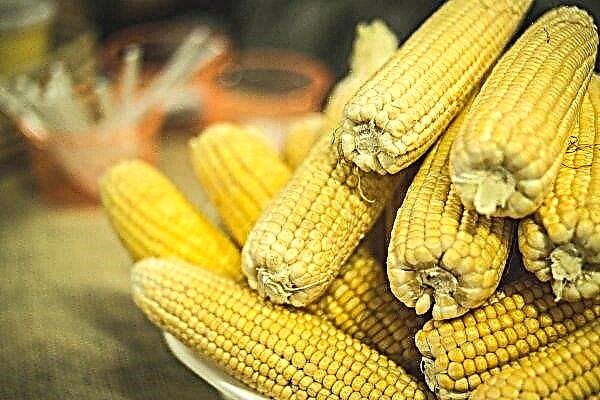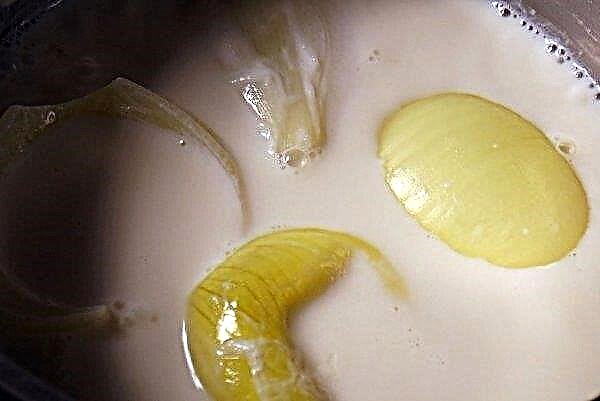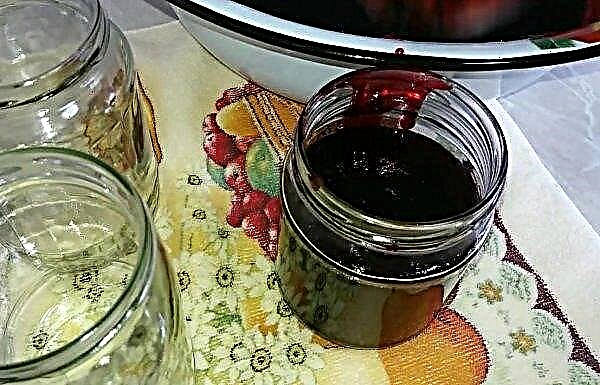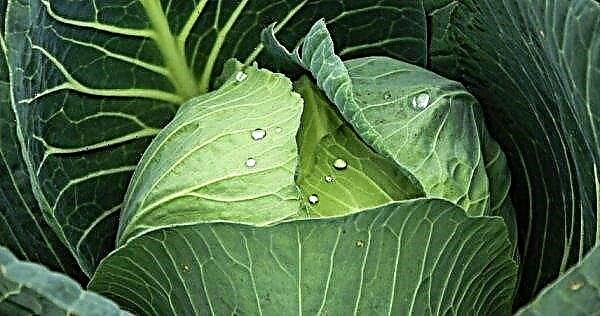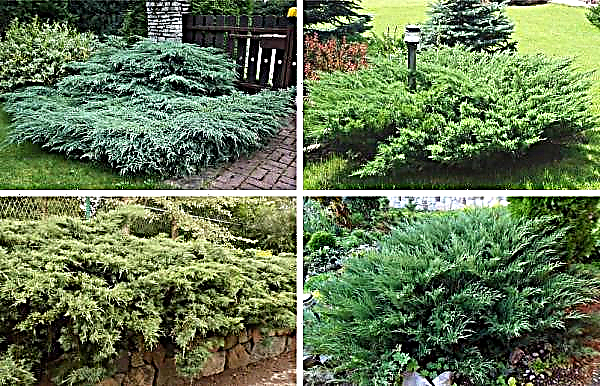Blackcurrant is one of the most grown crops. It is unpretentious in care, does not need special growing conditions, and for good fruiting it requires the implementation of traditional agricultural techniques. However, under adverse climatic conditions and poor care, it can sometimes be affected by various ailments and pests. How to prevent diseases and what means to use against parasites - more in the article.
Currant diseases and their treatment
To protect currants from diseases, every gardener should know the main signs of ailments and the main ways to get rid of them.
Fungus
The causes of various diseases in blackcurrant may be biological pathogens or chemical factors. Most often, the plant is affected by ailments manifested due to exposure to biological pathogens - fungi or bacteria.
All diseases caused by pathogenic fungi are quite dangerous, since they can infect any healthy shrub. For this reason, experts advise taking preventive measures rather than treating the culture.
A common fungal disease is rust, which is recognized by such signs:
Check out

- small yellowish spots appear on the top of the leaf plate;
- on the bottom of the sheet you can see small yellow or orange pads;
- gradually from the pillows develop columns on which the spores of the fungus hang;
- as the fungus grows, the entire lower side of the leaf is covered with orange hairs.
To avoid infection with a fungus, gardeners carry out a number of preventive measures:
- soil moisture control;
- weed weeding;
- regular pruning of shoots;
- spraying bushes.
If a disease is detected, all infected parts of the plant should be destroyed, and the culture should be sprayed with Bordeaux liquid, copper sulfate solution or quicklime.
Tuberculosis
Tuberculosis is a fungal disease that occurs due to exposure to a fungus that has two stages of development - conidial and marsupial. The conidial phase develops in the spring and at the beginning of the summer season, the marsupial - at the end of summer and autumn.

Both stages of the disease can be easily traced by characteristic signs:
- spores of mycelium through the wind penetrate into the damaged bark and begin to grow;
- gradually on infected branches and shoots pads with a diameter of 1-2 mm, red color, which are scattered across the surface, begin to appear;
- at the end of the summer season, the tops of shoots under the influence of growing spores of the fungus begin to die.
After the maturation of the mycelium, the marsupial stage develops, which is perfectly adapted to adverse conditions. Prevent the appearance of the fungus allows preventive spraying of bushes with a solution of 1% Bordeaux mixture or 0.4% copper chloride. When the bush is infected, all infected parts are removed and burned.
Important! The fruit body of the marsupial stage is able to tolerate winter well and remain on a shrunken branch until the next season.
Anthracnose
One of the most commonly affected fungal ailments is considered anthracnose, the causative agent of which is Colletotrichum orbiculare. Most often, the disease appears in May, in wet weather.
It is easy to recognize by the following symptoms:
- the formation of leaf blots of brown and red color, with a diameter of about 1 mm, with dark tubercles in the center;
- gradual increase in spots;
- drying and wilting of leaves.

When the characteristic signs of the fungus appear, treatment of the culture should be started immediately. Immediately after detection, the shrub is sprayed with a solution of Bordeaux liquid per 10 g of water per 100 g of the drug. The second time the treatment is repeated after harvesting.
The best preventive measures for the disease are:
- autumn cleaning of the site from dry, rotten vegetation, fallen leaves;
- prevention of excessive soil moisture.
Did you know? Today, there are about 150 varieties of wild currant culture. At the same time, it grows on all continents, except Australia and Antarctica.
Septoria
Equally dangerous is a fungal disease caused by a Septoria fungus - septoria or white spotting. It most often manifests itself with an increased level of humidity, deficiency of sunlight and high density of plantings.
White spotting is characterized by the following symptoms:
- the formation of brown spots on the leaves with a diameter of 2-3 mm;
- spots gradually become white in the middle, and darken at the edges.

In some cases, the fungus can pass on to the berries. For the treatment of the disease, all infected parts of the plant must be cut and destroyed, and the bush treated with a solution of 1% Bordeaux fluid.
Also, at the first symptoms of the fungus, it is advised to spray with Alirina B solution (2 tablets 1 liter of water) with the addition of liquid soap (1 ml of the product per 1 liter of water). Shrub treatment is carried out up to 5 times, with a difference of 10 days.
As a preventive measure, in the autumn they carry out mandatory pruning of bushes, clean the currant plantation from vegetation and fallen leaves, loosen the soil around the plants.
Sclerotinia
Sclerotinia or white rot belongs to the category of fungal diseases caused by spores of the fungus of the genus Sclerotinia. A rather dangerous ailment affects almost all parts of the culture - a white mycelium is formed on them, outwardly resembling cotton wool.

White rot proceeds in several stages, the symptoms of which are:
- in the first stage, weaving spots of brown color are formed at the base of the stem, while the leaves begin to fade;
- the second stage is characterized by the appearance of putrefactive spots and a cotton-like coating;
- at the third stage, the formation of sclerotia occurs, the death of parts of the culture over the site of infection.
As a rule, the disease does not affect plantations en masse, so if a diseased shrub is found, it should be dug up and destroyed. Spores of the fungus live and parasitize in the soil, therefore, for the treatment and prevention of the disease, soil fumigation is carried out, steam sterilization. Shrubs are sprayed with fungicidal preparations of a wide area of action.
Powdery mildew
Powdery mildew is a fungal disease caused by the deleterious effects of Erysiphales marsupial. As a rule, the disease affects the plant in July.

At this time, the following symptoms of powdery mildew can be seen on the bushes:
- the formation of a white loose coating on young leaves;
- during the spread of the fungus, a white coating also affects the berries.
With the timely detection of the disease, it is not difficult to cure the shrub.
Check out

In addition, folk remedies allow you to fight the disease:
- iodine solution: add 1 bottle of 5% iodine to 10 liters of water. Processing is done immediately after the detection of signs of the fungus, then after 3-4 days;
- solution of copper sulfate: 1 tsp. 1% of the drug in 6-7 liters of water.
Competent care of the plant, as well as its regular feeding, allows avoiding infection with powdery mildew bushes.
Ball rust
Rust is a dangerous disease that can occur at any time of the growing season. There are two types of ailment - goblet and columnar rust.
The first is manifested in the form of the formation of convex humps of orange color on leaf blades that are similar in appearance to warts. The disease can be carried by wind from sedge, growing not far from the currant plantation.

Spraying bushes with Fitosporin solution according to the instructions helps to overcome the disease. If the drug does not prove to be effective, it is recommended to treat the bushes with Bordeaux liquid at the rate of 1 part of the product per 7 liters of water. Spraying is carried out up to 4 times, with a range of 7-10 days between treatments.
Did you know? Previously, currants were called "monastery berry." The thing is that initially the monks in the monasteries were engaged in the cultivation of culture. The first mention of plant cultivation in monasteries dates back to the 11th century.
Column rust
Column rust is characterized by the appearance of small dots of orange color on the surface of the leaves. Coniferous forests located near the garden site can become a source of infection.

Simple prevention rules will help prevent the appearance of rust:
- regular loosening of the soil;
- systematic weeding of the plot from weeds;
- destruction of old vegetation and dry branches.
To avoid the appearance of the disease at the beginning of leaf blooming, a 1% solution of the Bordeaux mixture is sprayed. The second time the procedure is repeated in the phase of bud formation, the last after the flowering of the culture.
Nectric drying
Rarely, blackcurrant can become a victim of the harmful effects of the fungus Nectria ribis, which causes the drying of young shoots and branches. As a rule, such a disease is characteristic of white and red currants. Necrotic drying leads to the development of chlorosis or necrosis.
Chlorosis
Chlorosis is a disease in which there is a violation of the formation of chlorophyll in the leaves and photosynthesis activity is reduced.
It is advisable to begin the description of the ailment with its main symptoms, which include:
- yellowing and falling of leaves early;
- drying of the tops of the shoots;
- fading of young leaves;
- the death of root processes.

In most cases, chlorosis develops in bad weather, improper care, and nutrient deficiencies. In order to prevent the disease, they feed the currant plantation with organic and mineral means.
To heal the culture, special preparations are used, for example, Fulvital, which contains a complex of active biological components and vitamins.
Necrosis
With an excess of chlorine in the soil, currants run the risk of contracting marginal necrosis, which manifests itself in the form of drying of the edges of the leaves. By the end of the summer season, the edges of the sheet plate become ashen-gray in the form of a thin dry strip.
If symptoms of the disease are identified, foliar nutrition of the plant with ammonium nitrate should be carried out. At the same time, fertilizers are applied twice a season - in the spring, at the beginning of the vegetation stage and after flowering of the shrub.
Pests and how to get rid of them
In addition to various viral and fungal ailments, currants can become a victim of attacks by insect pests, which can damage all parts of the plant and lead to its complete death.
Bugs
Of particular danger to the plant are various bugs, in particular, currant goldfish, whose larvae eat the core of the branches. As a result of the negative influence of the beetle, the shoots dry out, the crop yield decreases sharply, the berries are smaller and become sluggish.

Parasitic bugs appear in early summer, after 7-10 days they lay their eggs on branches. Larvae that hatch after two weeks penetrate the trunk and eat its contents. To destroy the pest and prevent its further development, all affected parts of the bush should be destroyed.
With a massive defeat of the currant plantation, it is recommended to spray the bushes with insecticides. The Aktellik foliage processing, which is carried out three weeks after the completion of flowering, is highly effective.
From bugs, currants can also affect currants, which emerge in early spring. Individuals eat the vegetative organs of buds and flowers, later completely destroy the leaves and buds.
The only effective way to combat weevils is to treat shrubs with chemicals. Spraying is carried out in the phase of budding of the kidneys using pyrethroid or neonicotinoid agents.
Caterpillars
Caterpillars can cause great damage to currants: a leaf moth and a glass-case. The first is a small brown butterfly with small wings, folding house. Leafworm caterpillars also have a brown color.
Parasites feed on the leaves of the culture, as a result of which they curl, turn yellow and become covered with cobwebs. Also, caterpillars eat buds, flowers, berries. For the treatment and prevention of leafworms, biological products and insecticides are used.

Glass maker is a small butterfly with transparent wings, which in the middle of summer lays eggs in cracks of the bark or near the kidneys. Caterpillars that hatch from eggs in two weeks make hollow passages in the shoots, after which the branches dry out.

Unfortunately, it’s quite difficult to identify the glass. As a rule, it is found in the second year after the branches begin to dry out sharply before the ripening phase of the berries. To cure currants from the parasite, it is advised to cut and burn all the affected parts. Insecticide treatment is carried out only in the first stages of the lesion, until the caterpillar has time to penetrate into the branches.
Did you know? The most common are white, red and black currants. However, today there are varieties of culture with different colors of berries: yellow, green, orange and even purple.
Sawflies
Big problems for gardeners are berry sawflies, or rather their larvae, which develop in the ovaries and feed on seeds.
Under the influence of the larvae, the fruits of the currant ripen quite early, but are absolutely unsuitable for food. Moreover, if the berries are not picked on time, then the larvae get out, and they have to fight with them all the next season.

The fight against the parasite should include the following steps:
- before flowering currants, spray with insecticides;
- before ripening, all infected fruits must be collected and destroyed;
- in autumn, clear the area of vegetation, carefully dig the soil;
- carry out the hilling of bushes and their mulching.
Currant fly
A currant fly or gall midge is a small mosquito insect that can damage all areas of the bush. In places of development of pest larvae, swellings are formed, which are called galls.

Three types of gall midges parasitize on currant:
- sheet - affects the leaves of the bush;
- stem - develops on the stem;
- flower - lays eggs in flower ovaries.

Symptoms of gall midges in bushes are:
- yellowing and drying of leaves;
- the formation of leaf spots of red spots;
- leaf curl;
- growth inhibition of young shoots;
- twisting and falling of flowers.
All infected parts of the plant should be cut and destroyed. In autumn, shrubs must be treated with a solution of Karbofos.
The best preventive measures from gall midges are:
- thinning plantings;
- rejuvenation of bushes every 3 years;
- cultivation of land by tobacco water.
The most common growing problems and their causes
During the cultivation of blackcurrant, gardeners may encounter a number of problems caused by unfavorable climate conditions or untimely or illiterate basic agricultural practices for caring for the bush.
Growths on the branches
Growths on the branches of currant are considered symptoms of nectric drying caused by spores of the fungus Nectria ribis. First, small orange dots form on the shoots, which later turn into large tuberous growths.

At the stage of spore development, the tubercles become black, while the young shoots of the bush dry up and die off. In the absence of high-quality and timely treatment, the shrub completely dies.
At the first signs of an ailment, infected shoots should be destroyed, and the sections treated with garden var.
The best prevention of the disease is: the destruction of weeds, cleansing the site of the remnants of vegetation and adherence to the feeding pattern of the crop.
Currant Curl
Often, gardeners note that currant leaves begin to dry out around the edges and curl.
Curliness may also be accompanied by the following symptoms:
- thickening of the sheet plate in some parts;
- blistering on leaves of blisters;
- redness of leaf plates, gradual drying and falling of leaves.

In most cases, the cause of curliness is a Tafrin fungus or aphid insect. To combat the latter, a solution of "Actellica" or "Karbofos" is used. The fungus is destroyed by means of modern fungicidal preparations.
The buds bloom and immediately turn yellow
The cause of yellowing of the kidneys on the currant may be the appearance of a bud mite, which destroys the fruit buds, thereby negatively affecting the productivity of the plant.
Important! The main fight against the kidney tick is the organization of proper care for the bush and ensuring competent watering.
Depending on the season, the symptoms of a kidney tick may be different:
- in winter, the kidneys greatly increase in size;
- in the spring, the kidney material swells, blooms, but quickly turns yellow;
- bud growth is uneven; flowering plants are sparse;
- in the fall, the buds become excessively round, of different sizes.

To combat the parasite, special drugs are used, for example, “Karbofos”, “Phosphamide”, colloidal sulfur.
Inside the branches a void
The formation of voids inside the branches is evidence of the detrimental effects of the pest - a glass butterfly. A female parasite can lay up to 60 eggs in cracks of the cortex, from which caterpillars hatch, feeding on the internal contents of shoots.
Such damage leads to drying out of the branches, which occurs at the end of flowering crops and at the beginning of fruit ripening. To get rid of the pest, shrubs should be sprayed at the end of their flowering with a solution of insecticides. Infected branches need to be cut and burned.

Useful Care Tips
To prevent the development of various ailments in currants and the appearance of pests, Experienced gardeners advise to follow a few simple rules of care when growing crops:
- regularly inspect the bushes for parasites or signs of disease;
- carry out regular preventive spraying of the plant with folk remedies or special store-bought preparations;
- in autumn to clear the site of vegetation, fallen leaves, dry branches;
- all infected plants and parts thereof must be burned outside their area;
- strictly follow the moisturizing and top dressing currants;
- to conduct regular anti-aging and sanitary pruning of shoots, to prevent their thickening;
- when growing crops on highly acidic soils, liming the soil;
- Do not plant the culture in the lowlands, otherwise it will suffer from fungal diseases from excess moisture;
- systematically carry out loosening of the soil.

